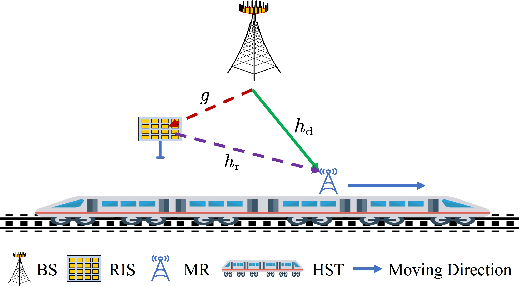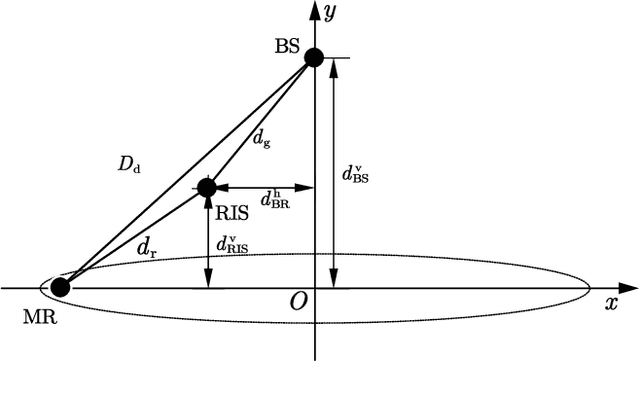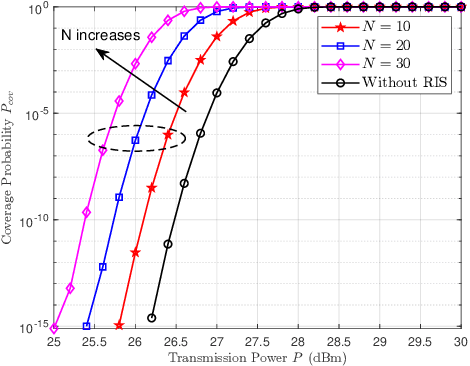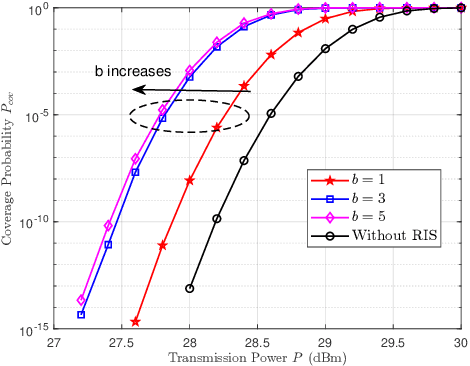Meilin Gao
Reconfigurable Intelligent Surface Assisted High-Speed Train Communications: Coverage Performance Analysis and Placement Optimization
Oct 19, 2023Abstract:Reconfigurable intelligent surface (RIS) emerges as an efficient and promising technology for the next wireless generation networks and has attracted a lot of attention owing to the capability of extending wireless coverage by reflecting signals toward targeted receivers. In this paper, we consider a RIS-assisted high-speed train (HST) communication system to enhance wireless coverage and improve coverage probability. First, coverage performance of the downlink single-input-single-output system is investigated, and the closed-form expression of coverage probability is derived. Moreover, travel distance maximization problem is formulated to facilitate RIS discrete phase design and RIS placement optimization, which is subject to coverage probability constraint. Simulation results validate that better coverage performance and higher travel distance can be achieved with deployment of RIS. The impacts of some key system parameters including transmission power, signal-to-noise ratio threshold, number of RIS elements, number of RIS quantization bits, horizontal distance between base station and RIS, and speed of HST on system performance are investigated. In addition, it is found that RIS can well improve coverage probability with limited power consumption for HST communications.
Coverage Probability Analysis of RIS-Assisted High-Speed Train Communications
May 26, 2022



Abstract:Reconfigurable intelligent surface (RIS) has received increasing attention due to its capability of extending cell coverage by reflecting signals toward receivers. This paper considers a RIS-assisted high-speed train (HST) communication system to improve the coverage probability. We derive the closed-form expression of coverage probability. Moreover, we analyze impacts of some key system parameters, including transmission power, signal-to-noise ratio threshold, and horizontal distance between base station and RIS. Simulation results verify the efficiency of RIS-assisted HST communications in terms of coverage probability.
 Add to Chrome
Add to Chrome Add to Firefox
Add to Firefox Add to Edge
Add to Edge